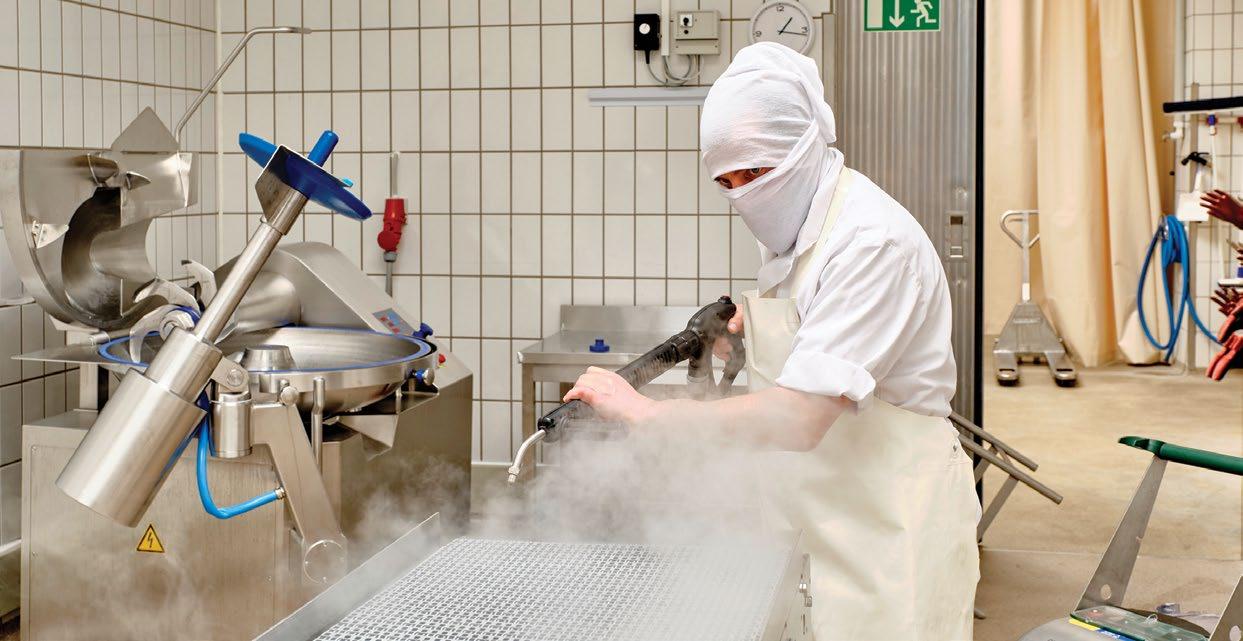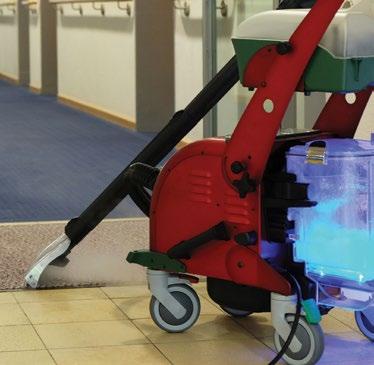
2 minute read
The power and benefits of dry steam for multiple industries
Dry steam cleaning and sanitising machines have been around for several years, but only recently have they come to the fore. The outbreak of the COVID-19 pandemic in 2020 has brought about more awareness of the need for companies and public-serving outlets to comply with proper sanitisation best practices. There have been many studies done on the effectiveness of dry steam at over 160°C, in effectively combating bacteria and other pathogens.
Greater than 90% reduction in pathogen levels
Advertisement
In an article published on the US Government’s National Library of Medicine, it was found that a steam vapour (i.e. Dry Steam) system reduced bacterial levels by >90 percent and reduced pathogen levels on most surfaces to below the detection limit. The steam vapour system provides a means to reduce levels of microorganisms on hospital surfaces without the drawbacks associated with chemicals, and may decrease the risk of cross-contamination.
Food production – HACCP compliance
A recent outbreak of listeriosis in a well-known food production facility in South Africa highlighted the need for eco-friendly solutions such as dry steam in combating bacteria hotspots without the need for expensive chemicals.

Picture: DrySteam Supreme
Swab tests done on areas that have been sprayed with dry steam always show a substantial reduction in microbial levels. Some brands of dry steam machines have HACCP accreditation.
Water savings
One of the major benefits of dry steam cleaning is in water saving. Food manufacturing or processing plants are notorious for using thousands of litres of water daily in order to keep their production equipment clean and sanitised. In dry steam mode, machines use as little as 90 ml of water per minute. Not only is this important for cost savings, but also in protecting the already strained water resources in South Africa.
Steam cleaning and sanitisation innovation
Older technology dry steam machines were only able to eject steam. Newer machines can do deep extraction from most surfaces, including upholstery. Manufacturers are also starting to use complementary pathogen killing technologies such as water filtration combined with UV light sterilisation. Any pathogen that is not immediately killed by the dry steam, is extracted from the air or surface and trapped in the water filter, where a powerful UV light leads to its demise.
In a post COVID-19 pandemic era it is expected that dry steam technology will see major adoption worldwide as the cleaning and sanitising solution of choice for many industries including food processing and manufacturing, pharmaceutical manufacturing, healthcare facilities, restaurants and supermarkets and in the automotive industry such as public transport operators and car rental firms.
DID YOU KNOW
Dry Steam Cleaning is a sanitising method favoured by many food, beverage, and pharmaceutical producers as a high temperature, relatively dry, chemical-free process for cleaning production equipment in accordance with various codes and standards. The process was developed in Europe where concerns about high water use, chemical sensitivities, waste management, and stepped up hygienic standards led away from more traditional sanitising procedures – thomasnet.com





